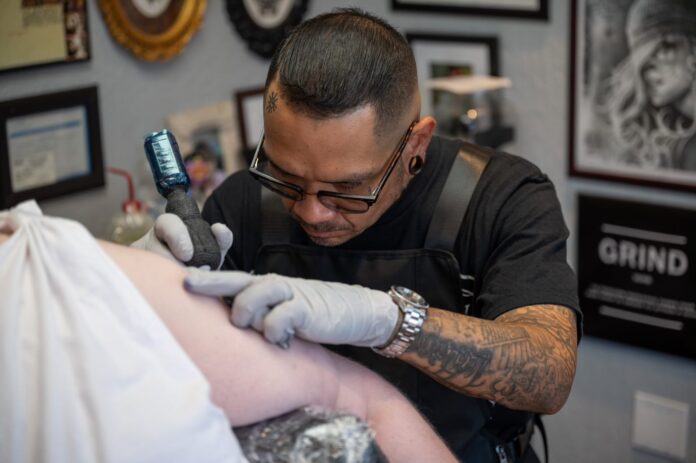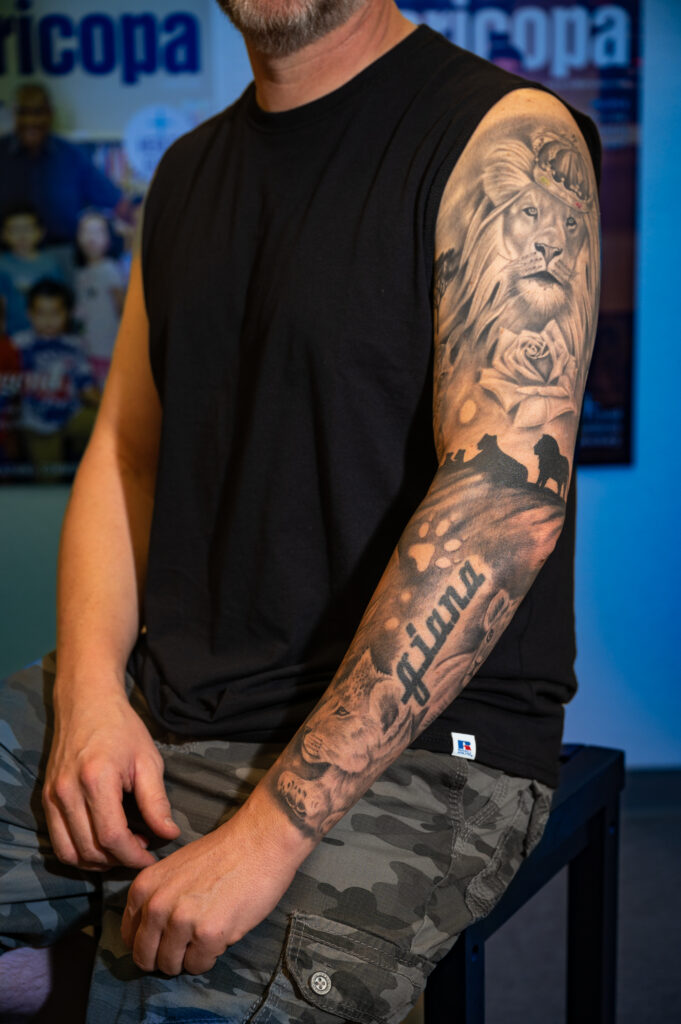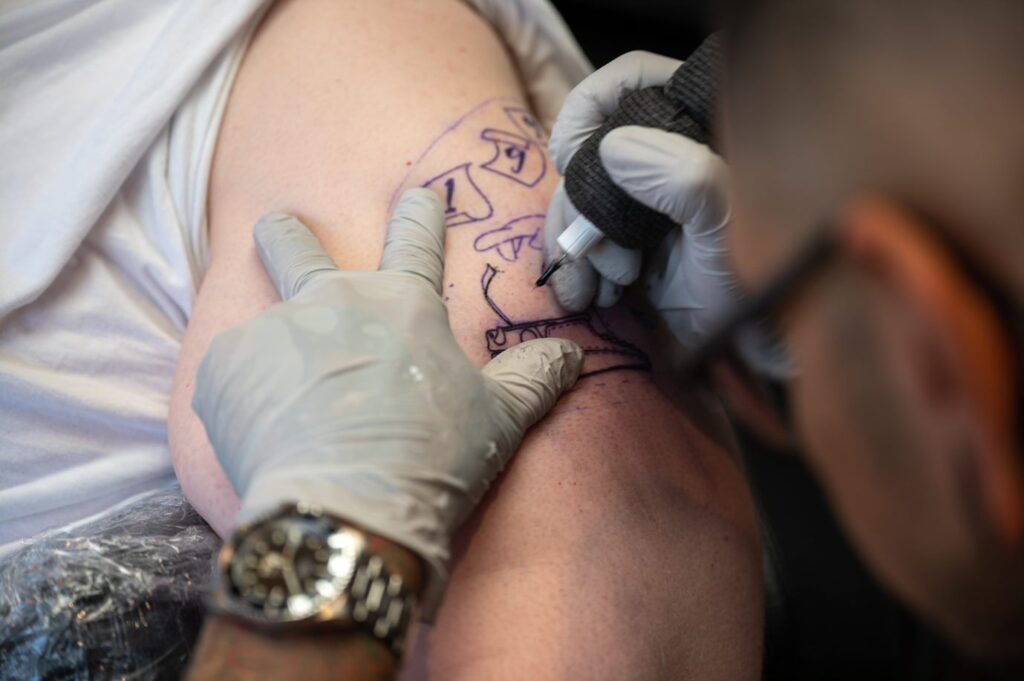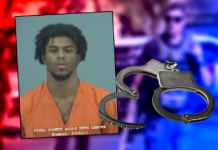
It wasn’t long ago that tattoos told quite a different story.
The assumption was if you had a tattoo, you were either a sailor, a member of a motorcycle club or maybe did some time in the joint.
And if you did not fit into one of those groups, the ink was probably the result of an ill-advised night out.
Nowadays, the clientele for tattoo shops is almost mainstream.
An ever-changing clientele
Sitting in the lobby of Redemption Tattoo, a Maricopa shop run by Nick Sanchez, you see all kinds.
One minute, it’s an elementary school teacher. The next, it’s a grandmother. In fact, far more white-collar professionals are getting inked than ever before.
There are so many different types of customers — first responders and entrepreneurs of all sorts among them — it is difficult for Sanchez to keep track.
“I tattoo a lot of teachers,” Sanchez said. “You know, just yesterday, I took my 5-year-old daughter to a daddy-daughter dance, and I ran into a teacher that complimented me on some work I had done for them.”
“I get a lot of people who own their own businesses,” he said. “There are a lot of different people, and so many times, they inspire me to take my work to the next level.”
When asked about his average customer, Sanchez said there’s no such thing.
“That’s one of the biggest reasons why I feel so blessed to do this work,” he said. “I meet so many people from so many different walks of life that I would have never met otherwise.”
Society’s evolving stance on tattoos
Multiple studies have been conducted on who’s getting tattooed. While the numbers differ depending on which report you read, they all seem to hint at the same fact: tattoos are on the rise.
In 2019, an Ipsos study concluded 30% of all Americans have at least one tattoo, a number that had increased 21% since 2012. And a January study by Rasmussen Reports found nearly half of all adults under the age of 40 now have at least one tattoo.
Tattoos used to represent an element of danger, or perhaps signal running with the wrong crowd. It’s a different situation altogether now. Still an outlet of artistic expression for the artists and the inked, the reasons people get tattoos are varied, Sanchez explained.
“I have a lot of clients who want to celebrate a special moment in their lives,” he said. “Or maybe they want to use it to tell a story that’s meaningful to their journey.”
Greg Grossi, 43, used an entire arm sleeve tattoo to highlight his growing family. It took multiple sessions over the course of a year to finish.

Norm Bradley, 45, works at the Nissan Proving Ground in Stanfield. He had his first tattoo at 19, but has grown more comfortable with age showing them, adding to his collection over the years.
“I’ve always wanted tattoos and found them intriguing,” Bradley said. “As a younger man, I was trying to make it in the corporate world of ‘no tattoos, no tattoos,’ and you had to cover them up with a shirt. Now I’m a little older and in a more senior position, and I started to feel like, you only live once and I’m going to do it. I’m going to express myself and I don’t care what people think.”
Bradley has a 22-year-old son who recently sat for a tattoo.
“At first, I didn’t really want my son to get a tattoo while he was young,” Bradley said. “But then he told me about how established people in his field were getting work done and I came to realize that times are changing.”
‘Ink therapy’
Depending on how long a tattoo session lasts, Sanchez really gets to know his clients.
“Sometimes, I feel like a counselor,” he said. “In some cases, I’m spending hours with them, especially with the larger pieces. People tell me all kinds of things. And especially if it’s just me and them, they lay some pretty heavy things on me. Sometimes, I don’t know how to respond. So, I just listen.”
“That’s why they call it ‘ink therapy,’” Sanchez said.
The pain of getting a tattoo can also prove to be cathartic.
“Many times, people get a tattoo of a relative who just passed or they’re trying to make it through a heartbreak or a challenging time in their life,” he said.
Getting a tattoo has a way of transforming mental and emotional pain into a physical pain, which for some people, can prove therapeutic.
“You are kind of releasing that pain and it’s almost like a workout,” Sanchez said. “Because in a lot of ways, you are putting your body through a stress while you get the tattoo.
“While you are getting the tattoo, your body is constantly releasing endorphins, which are going to make you feel better.”
There’s also the feeling of finality.
“And when you are done with the tattoo, you feel like you’ve completed something, or you feel like you’ve made it through it,” Sanchez said.
That stress is why not everyone is a candidate for body art.
“That’s why we don’t tattoo pregnant women,” Sanchez said. “Because you’re putting the body under stress, and you don’t do anything that might cause a miscarriage.”

As society changes, so are tattoo parlors. Most shops today are clean and inviting environments. It’s a far cry from what you might see on TV or in a movie, where an unshaven gruff tattoo artist chomps on a stogie while digging the needle into the skin of a patron.
Tattoos are permanent and some require a time investment.
Jenece Mordt, a retired teacher with a few tattoos, offered some advice.
“I think you’ve got to look at the artist and the kind of work they do,” she said. “I think you’ve also got to look at the shop and how it looks and whether it’s clean. You really have to make sure that you’ve got a good vibe with the artist.”
Bradley said he learned from his first tattoo as a 19-year-old.
“I picked something, and I thought it was going to be cool. As I got older, it wasn’t so cool,” he said.
Eight years ago, Bradley decided to take another swing at it.
“I was going to a nice taco shop in Laguna Beach (California) and there was a tattoo shop nearby. I stopped in, picked something out,” he recalled. “Thought it was going to be cool and then, the same thing happened again.”
Ruth Strickengloss, who’s retired from the Navy, has seven tattoos. She feels it’s important to take charge of the situation.
“Make sure you know what you want,” she said. “Ask to look at their portfolio. Figure out what kind of tattoos they do best. Do your research if you want quality.”
Sanchez, who has been a tattoo artist for the last 16 years, recommended going online to look at an artist’s work before sitting in their chair. Many artists post their work on social media outlets like Instagram.
“You want to look at the work they do and see if it fits what you are looking for,” Sanchez said. “You also want to look at how clean their shop is and ask a few questions, like, do they practice cross-contamination prevention procedures?”
Along with that, there’s a personal side to getting a tattoo.
“Take time to talk with them and figure out whether you have that vibe with the artist and whether you sense anything,” he advised. “Because they are going to put something on you and it’s going to be with you forever.”
Read about Editor Justin Griffin’s tattoo experience and InMaricopa reader’s tattoos.
This content was first published in the June edition of InMaricopa magazine.





![Elena Trails releases home renderings An image of one of 56 elevation renderings submitted to Maricopa's planning department for the Elena Trails subdivison. The developer plans to construct 14 different floor plans, with four elevation styles per plan. [City of Maricopa]](https://www.inmaricopa.com/wp-content/uploads/2024/04/city-041724-elena-trails-rendering-218x150.jpg)

![Affordable apartments planned near ‘Restaurant Row’ A blue square highlights the area of the proposed affordable housing development and "Restaurant Row" sitting south of city hall and the Maricopa Police Department. Preliminary architectural drawings were not yet available. [City of Maricopa]](https://www.inmaricopa.com/wp-content/uploads/2024/04/041724-affordable-housing-project-restaurant-row-218x150.jpg)









